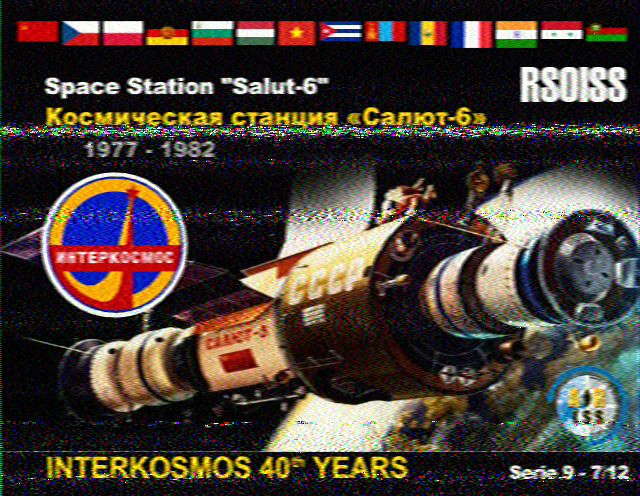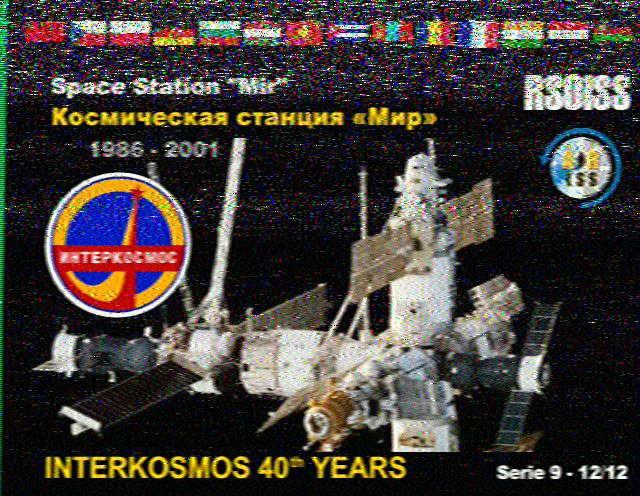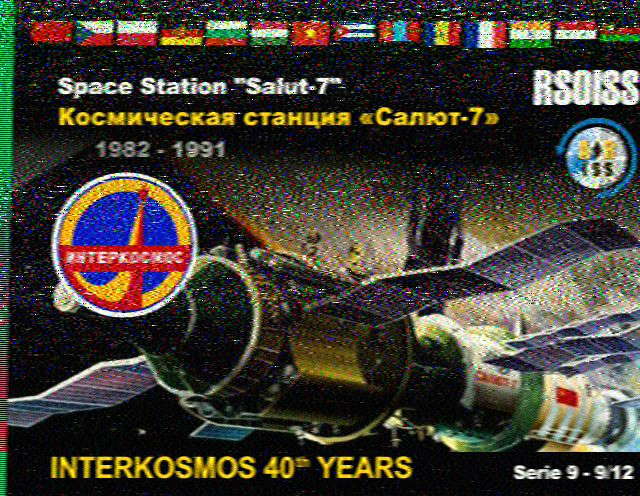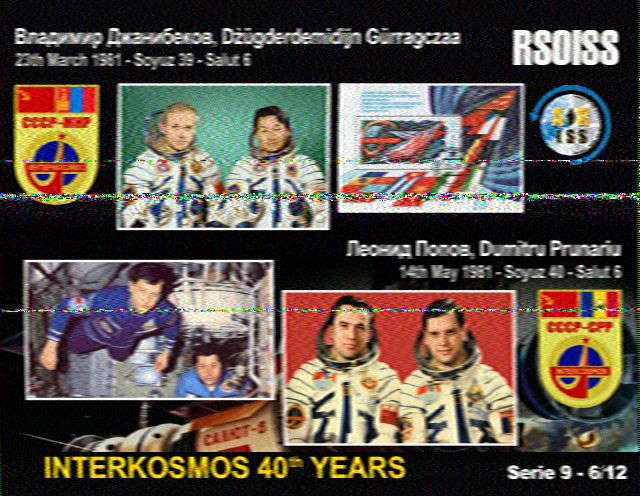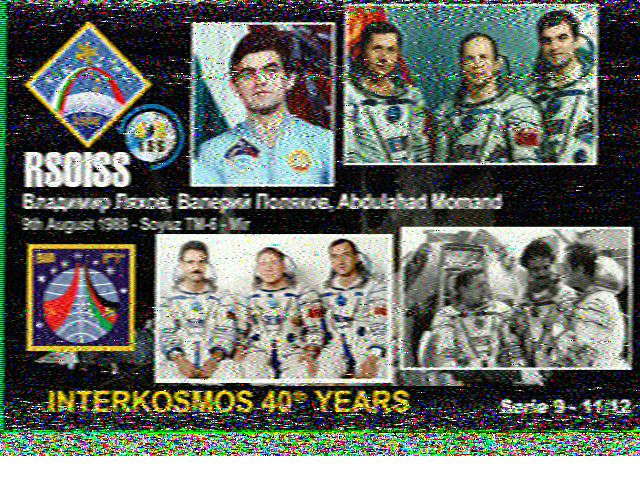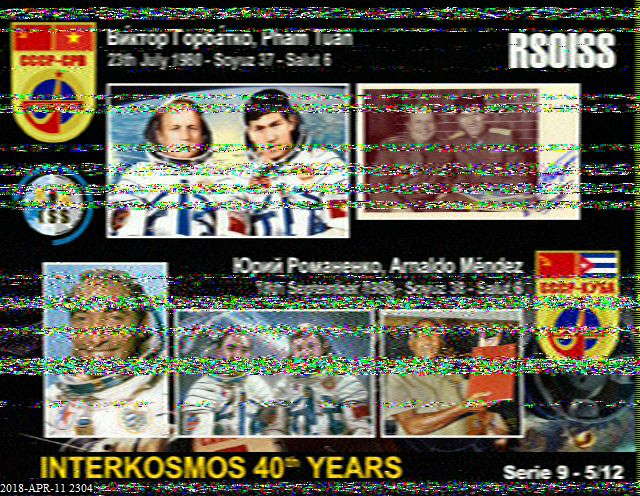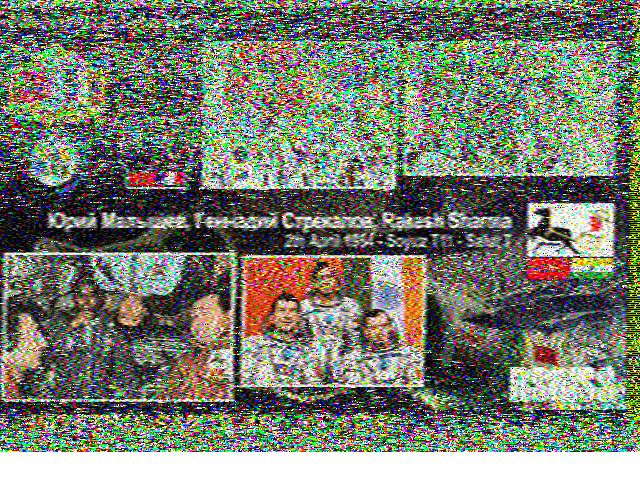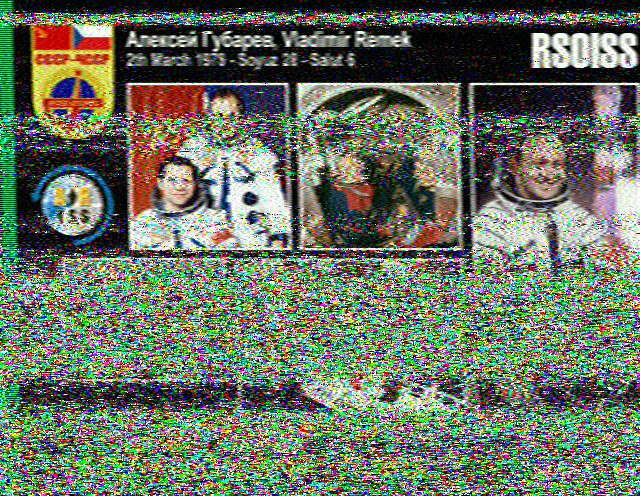A few years ago, I learned of slow-scan TV transmissions from the International Space Station. SSTV is essentially a form of narrowband television – a single frame, taking anywhere from a few seconds to a few minutes to transmit, used mainly in amateur radio applications.
The SSTV images from the ISS are transmitted by ARISS (http://www.ariss.org) to commemorate various events and anniversaries. Usually, a series of 12 images will be transmitted over the period of a few days, allowing anyone with the right equipment to have a chance at capturing and decoding the images as the ISS passes overhead.
Most recently, a series of images celebrating the 40th anniversary of the Interkosmos Soviet space program were transmitted between the 11th and 14th of April. These were transmitted in PD120 format, which take 120 seconds for a full frame at 640×496.
I used an RTL-SDR dongle (https://www.rtl-sdr.com) and a 25-1300 MHz discone antenna and was keen to see what I could receive.
The first step was to determine when the ISS would be passing overhead using Heavens Above (http://www.heavens-above.com). Make sure you select all passes (not just visible only) – this will show all passes of the ISS that are 10 degrees or higher above the horizon:

Next, I set up VB-Cable (https://www.vb-audio.com/cable) to route audio output back to input, and configured MMSSTV (http://hamsoft.ca/pages/mmsstv.php) to decode the images. Both programs require only a minimum of configuration and work largely out-of-the-box; you shouldn’t need much guidance to get these working.
A few minutes before the ISS was above the horizon, I used SDR Sharp (https://airspy.com/download) to tune the SDR to 145.800 MHz with a gain of around 33dB, and soon started to receive the transmission:

You’ll see above that I’m tuned slightly off the centre frequency. This is due to Doppler shift as the ISS approaches, causing the signal to appear slightly higher than transmitted – as it crosses overhead and moves away from the antenna, the frequency slightly and gradually decreases. With everything in place, I had several attempts over the course of a few days with some moderate success (and plenty of failure):
Even though I’m reasonably happy with the result, I was able to learn plenty that should help me achieve even better results next time.
Receiver gain can be both your friend and enemy! Depending on if the ISS is directly overhead or approaching the horizon, it can be anything from just over 400km to a few thousand kilometres away, requiring the receiver gain to be set to a reasonably high level to receive a clear signal. ISS transmissions sit in the 2-meter band which in Australia, and particularly major cities, is adjacent to the band heavily used for POCSAG pager traffic. POCSAG transmissions are very high power, which results in interference in adjacent bands when the receiver gain is increased. This results in artefacts in the received images (visible in some of the above images as horizontal lines of interference.) A notch filter may be effective in filtering these to some extent.
You can listen to one of the better transmissions below. If you’re setting this up for yourself, you can use this to test that VB-Cable and MMSSTV are configured correctly by playing it directly into MMSSTV.
With any luck, we’ll see another series of transmissions before the end of the year.
